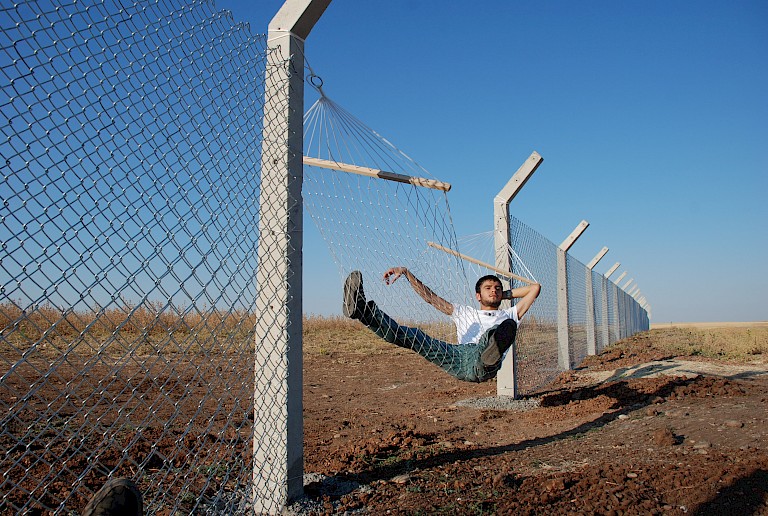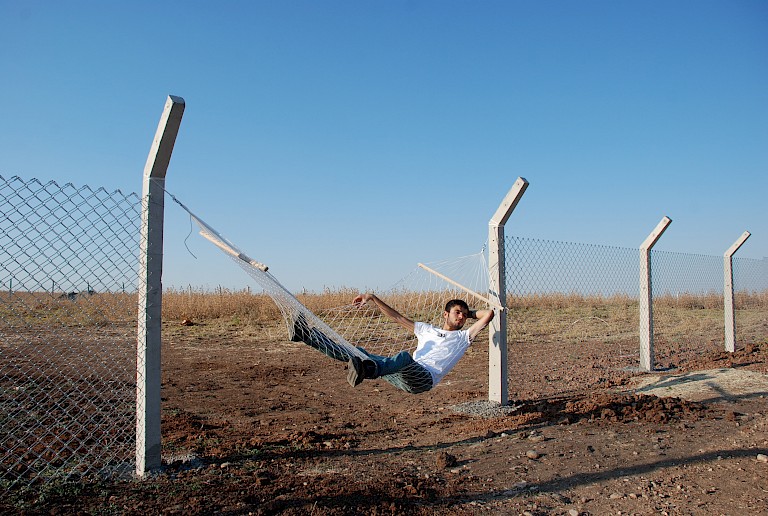



Due to the potential danger of the location, the public performance of Border was brief, and the work exists and circulates primarily as a photograph. Akin to performance art that centrally entails live performance but is often experienced by audiences through photograph or video documentation, Border goes beyond being a staged photograph and has an important role as a public art project. Although largely not experienced on-site or in-person, the significance of the work is importantly tied to both place and performance.
The subject’s body is on the line. Although the figure is reposed, the austere fencing serves as a reminder that his presence and action are unsanctioned. His calm is therefore precarious, menaced by potential disruption at any moment. Yet Gök’s performance offers a lighthearted response to the severity of borders. As curator Simon Rees noted, the work is “a humorous reflection on the blind spots of the global news cycle as it relates to peripheries.” Borders are intertwined with high-level government disputes, but there is also a disconnect between life on the ground and the showboating of political leaders—a gap highlighted by the photograph’s contrast between rigid fencing and the impromptu rearrangement of existing structures.
Commenting on the physical dynamics of both the reclining figure and borders cutting through unbroken territory, curator Şener Özmen underscored that “Gök questions the concept of disunity…as the hammock rocks, our man will swing between one and the other side of the border.” There is a humor in this staging, but as Özmen underscores, also “a privilege being winked at.” Although borders are sites of mixing, agency, capability, and access are not equally shared. Border invites viewers to question who gets to play with borders and also who suffers when decisions about borders are handled too carelessly, callously, or easily.
The sway of the figure between one side and another also amusingly calls to mind the changeable nature of definitions, particularly relevant for the southern border of Turkey. The farthest reach of Europe or the beginning of the Middle East, Turkey is itself defined one way or another, varying with different references to geography, history, culture, or politics. Even when borders remain, their implications change quickly with the shift of surrounding interpretations or contexts. In 2010 when the photograph was taken, there was a degree of danger. Today, the on-going Syrian civil war has transformed the nature of this 500-mile stretch of border, crossed now by over 1 million refugees. Gök’s photograph, too, takes on a new meaning, highlighting the stark contrast of stability and conflict across which the figure swings. The action and photograph are intricately linked to the place of the border, but the photograph also encourages continued reflections upon the establishment and handling of such divisions, a significance that has only increased since the work’s creation.
All copyright belongs to Shanghai Academy of Fine Arts, Shanghai University.


